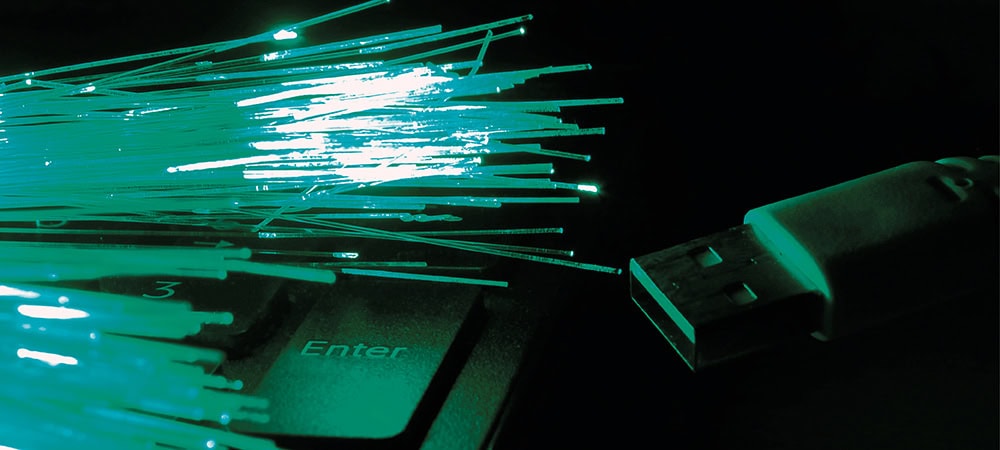Transformation and data dawn

DMI provides a system and application-independent platform that can be used to manage the entire life cycle of this information up to its legally compliant deletion. It is called JiVS IMP, where IMP stands for Information Management Platform.
E-3: What specific advantages does your approach of a separate data layer offer for the transformation to S/4?
Thomas Failer: Let's start with the SAP managers' goal of designing the transformation as a technical project. In the new S/4 world, existing SAP customers should only need around ten percent of the data stock for processing, only around half of the business objects and around 20 percent of the previous document types. Of what remains, 90 percent to 95 percent should be able to be transferred to the new world using standard SAP tools such as the Conversion Tool or Migration Cockpit. This should reduce the overall effort for transformation and migration by half. This should also massively reduce the need for external consultants. This comes very, very close to the goal of a technical project.
E-3: Conversely, SAP users might not appreciate this at all?
Failer: That's the beauty of a separate but context-aware data layer for historical information. As the data is fully accessible at all times together with its business context, it no longer matters that it is not in S/4 Hana but outside of it. If access is also integrated into the user interface, whether SAP GUI or SAP Fiori, users can view the historical information as if it had been created in SAP S/4. They don't even notice the difference.
E-3: However, access initially means
Status quo for once, not change or innovation?
Failer: That's true, but the fact that the separate data layer approach massively reduces the amount of baggage that has to be carried means that top managers can make changes much more easily and shape the digital future dynamically without having to take legacy issues into account. On our platform, for example, it is possible to select, transform and migrate precisely that part of the information that users actually need in the S/4 environment. This serves all interest groups. But that is not the only advantage.
E-3: Which ones are still available?
Failer: By separating out the old data and cutting the link to the old structure, there is an opportunity to clean up the historical data, but only the part of it that the company continues to process. I am thinking here, for example, of data on suppliers with whom the company is currently doing business.
E-3: But there are also the supervisory authorities and auditors. What do they think of your approach?
Failer: If certified audit security is ensured, then they are very happy with it. Because then legal certainty can be established. Since the European General Data Protection Regulation, this no longer only consists of being able to prove that content subject to retention requirements is stored for the prescribed period without changes. Rather, information and deletion obligations have been added, meaning that companies must be able to manage their information down to the level of the individual data record and individual document until they are allowed to delete it. However, with many legacy systems, this lifecycle management is technically impossible or only possible with a great deal of effort. It is no wonder that, according to a Capgemini study, only 28% of companies comply with the EU GDPR regulations. This is because a new approach is required. It consists of storing and managing 100% of historical information on a separate data layer without changing its structure.
E-3: Does DMI also offer a solution for this?
Failer: Yes, if the approach is implemented correctly. This means that the separate data layer for historical information must provide appropriate functionalities. If it does this like our platform, existing SAP customers can completely decommission their legacy systems and applications. According to our customers, this leads to a reduction in operating costs of 80 percent or more.
E-3: Aren't these all one-off effects? Isn't such a data layer more like an archive in the long term?
Failer: You are addressing a very crucial point. A system and application-independent but context-aware data layer only deserves this name if it is dynamic and not static. This means, for example, continuously moving data that is no longer processed operationally to this layer. This keeps the Hana in-memory database, which is still expensive compared to inexpensive storage media, permanently lean. We assume that this alone will reduce the total cost of ownership of SAP S/4 Hana by a quarter over its entire lifecycle. This is all the more true when you consider the ADK problem that those responsible are increasingly concerned with.
E-3: What is this problem?
Failer: SAP inventory customers usually solve the problem of a rapidly growing online database by moving old documents and data to ADK archives. If they need to delete old documents or data at a later date, this does not work at the archive level. This means that they would have to upload this information back into the application, delete it and archive it again. However, these archives were never built for cases such as those envisaged by the GDPR. A separate data layer in which 100 percent of historical information is stored together with its business context, on the other hand, does not have this problem.
E-3: However, we are still talking about a data layer for SAP, aren't we?
Failer: It's good that you mention this. The separate data layer must be designed to be system and application-independent. Openness is therefore another fundamental characteristic of this context-aware data layer. What's more, it is even a basic requirement for the digital company. This is because the digital company is fundamentally data-driven in all areas. This means that companies must include not only operational but also historical information in this management and the associated analysis. On the one hand, this enables a far greater number and frequency of data accesses and, on the other, requires a fundamental openness towards third-party solutions through the support of standards such as JDBC and web services.
E-3: Does this mean that not all data has to become part of this data layer?
Failer: Yes, they definitely should. But they don't have to be in the same repository, even if that makes the most sense for historical information.
E-3: Why?
Failer: Harmonization is the key word here. And harmonization begins with the consolidation of systems, applications and data centers. The switch to SAP S/4 can be used to streamline from 50 or more ERP applications spread across different locations to just one SAP system of the latest generation. Companies store their historical information on a central platform.
E-3: What is the difference to a central archive?
Failer: Archives store data without a business context; a central platform as the core of a company-wide data layer removes the data from its original systems together with its context. The data that needs to be processed further in the new system as part of open processes can then be filtered out. And it is only this data that companies need to transform and migrate. We have already talked about the resulting time and cost benefits. But a platform like this can do much more.
E-3: What exactly?
Failer: I would like to mention the virtual harmonization of master data in particular. This makes it possible to create a master data structure that corresponds to that in the leading operational systems, whether SAP S/4 or special analytics solutions. This creates an all-round view of all business objects such as customers or suppliers because, from the user's perspective, the separation between historical and operational data is eliminated and the differences in data structures resulting from different software generations and manufacturer formats are eliminated. It is almost ironic: only the clean separation of the layers allows this harmonized overview, this 360-degree view.

E-3: If the historical data was complete and correct ...
Failer: Exactly. That is why such a platform must offer the possibility of optimizing data quality. This means that it must provide functionalities for error identification and correction. It must be possible to eliminate duplicates and incorrect data records, just as it must be possible to complete incomplete data records. The digital and intelligent company, which is within reach thanks to new generations of software and the fundamental modernization of IT, is dependent on absolutely reliable data.
E-3: What advice would you therefore give to existing SAP customers who want to tackle their S/4 transformation in 2022?
Failer: I would advise them to do two things: The transformation to the new software generation from Walldorf is THE big opportunity for data harmonization, which can be achieved most easily, cost-effectively and effectively if it takes place before the switch to SAP S/4. In addition, the transformation should be linked to the creation of a separate but context-aware data layer. The ideal basis for this fabric is a central platform for managing the lifecycle of historical information.
E-3: But doesn't that take far too much time?
Failer: It saves an enormous amount of time and, of course, a lot of money. Therefore, in addition to legal certainty and openness, another key feature of a context-aware data layer based on a central platform for information management is the high degree of automation. It must be possible to extract the structured and unstructured information from the legacy systems and the associated archives at the touch of a button and in turbo speed. Determining the reduction potential of the data to be transformed, optimizing data quality, dynamic virtual master data harmonization - these are areas that must be highly automated.
E-3: Last objection: Isn't this a dream of the future? The trend towards the data fabric, as Gartner calls it, is not yet a solution.
Failer: That it is better to extract data from legacy systems together with their business context and manage it in a separate environment became clear to me as early as the 1990s when the generation changeover from R/2 to R/3 took place. What began as a solution for decommissioning legacy systems is now a comprehensive platform for managing the lifecycle of information, from decommissioning legacy systems, separating operational from historical information and optimizing data quality to migration and transformation. It has all the features mentioned and helps to achieve the benefits proven by over 2000 successful projects worldwide. Our JiVS IMP platform is already laying the foundations for a context-aware data layer in companies. With the help of JiVS IMP, existing SAP customers can usher in the S/4 era within months. 2022 will not only be the year of transformation, but also of the dawn of data.
E-3: Thank you for the interview.







